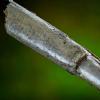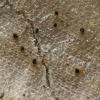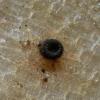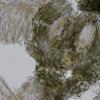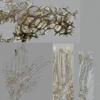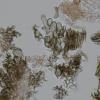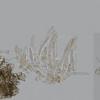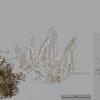
21-12-2025 09:32
Hello.A tiny ascomycete found embedded in wood in

21-12-2025 21:32
Pol DebaenstHello, Garden, Burgweg 19, Veurne, BelgiumOn 10/1

22-12-2025 23:38
Patrice TANCHAUDBonsoir, récolte sur un mur en pierre, apothéci

22-12-2025 00:47
Patrice TANCHAUDBonsoir, récolte à proximité du milieu dunaire

21-12-2025 21:40
Isabelle CharissouBonjour, j'aimerais connaitre les références de

20-12-2025 23:08
Patrice TANCHAUDBonsoir, récolte sur sol sablonneux dans l'arri�
Pyrenopeziza cf
Petra Eimann,
29-06-2019 17:19
Greetings Petra
Hans-Otto Baral,
29-06-2019 21:37

Re : Pyrenopeziza cf
Hi Petra
the microscopic appearance is actually that of a Pyrenopeziza, but I would not trust without having seen living elements, especially paraphyses, in order to exclude a Mollisia.
The cuneate spores seem characteristic. For an identification a scale or spore size would be obligatory. I assume the spores are rather small. Inamyloid asci are rare, did you use Lugol or Mellzer? Your photo in iodine suggests an amyloid apical ring, isn't it?
Zotto
the microscopic appearance is actually that of a Pyrenopeziza, but I would not trust without having seen living elements, especially paraphyses, in order to exclude a Mollisia.
The cuneate spores seem characteristic. For an identification a scale or spore size would be obligatory. I assume the spores are rather small. Inamyloid asci are rare, did you use Lugol or Mellzer? Your photo in iodine suggests an amyloid apical ring, isn't it?
Zotto
Petra Eimann,
30-06-2019 00:08
Re : Pyrenopeziza cf
Hi Zotto,
thank you for your opinion, unfortunately I did not find any free spores. The spores in the Ascus have the following dimensions:
5,45 x 1,82, 5,39 x 1,71, 4,75 x 1,85, 5,95 x 2,05, the scale I inserted into the picture. I used Lugol. Unfortunately I cannot judge the photo in iodine correctly whether it is an apical amyloid ring or not. There is an exsikkat available which I could send if necessary.
Petra
thank you for your opinion, unfortunately I did not find any free spores. The spores in the Ascus have the following dimensions:
5,45 x 1,82, 5,39 x 1,71, 4,75 x 1,85, 5,95 x 2,05, the scale I inserted into the picture. I used Lugol. Unfortunately I cannot judge the photo in iodine correctly whether it is an apical amyloid ring or not. There is an exsikkat available which I could send if necessary.
Petra
Hans-Otto Baral,
30-06-2019 10:10

Re : Pyrenopeziza cf
o.k., this means indeed small spores. With so small asci it is difficult to photograph the apical ring. Beter is to judge directly under the mic. Sorry, I have no time for that,´.
But a suggestion for a species I do not have.
My monocot folder of Pyrenopeziza gives spore sizes, and only one (on Acorus) has so small and narrow spores, but these are not tapered below.
But a suggestion for a species I do not have.
My monocot folder of Pyrenopeziza gives spore sizes, and only one (on Acorus) has so small and narrow spores, but these are not tapered below.
Petra Eimann,
30-06-2019 13:51
Re : Pyrenopeziza cf
Thank you Zotto. Then it's still called Pyrenopeziza cf.
Petra
Petra
Petra Eimann,
06-07-2019 22:19
Re : Pyrenopeziza cf
Hi Zotto,
Is it possible that it is not Pyrenopeziza but Pirottaea imbricata?
LG Petra
Is it possible that it is not Pyrenopeziza but Pirottaea imbricata?
LG Petra
Hans-Otto Baral,
06-07-2019 22:28

Re : Pyrenopeziza cf
P. imbricata I know with apically pr laterally thick-walled hair-cells, I do not see them here.
Petra Eimann,
06-07-2019 23:07
Re : Pyrenopeziza cf
Thank you Zotto, I suppose another genus is out of the question. LG Petra
